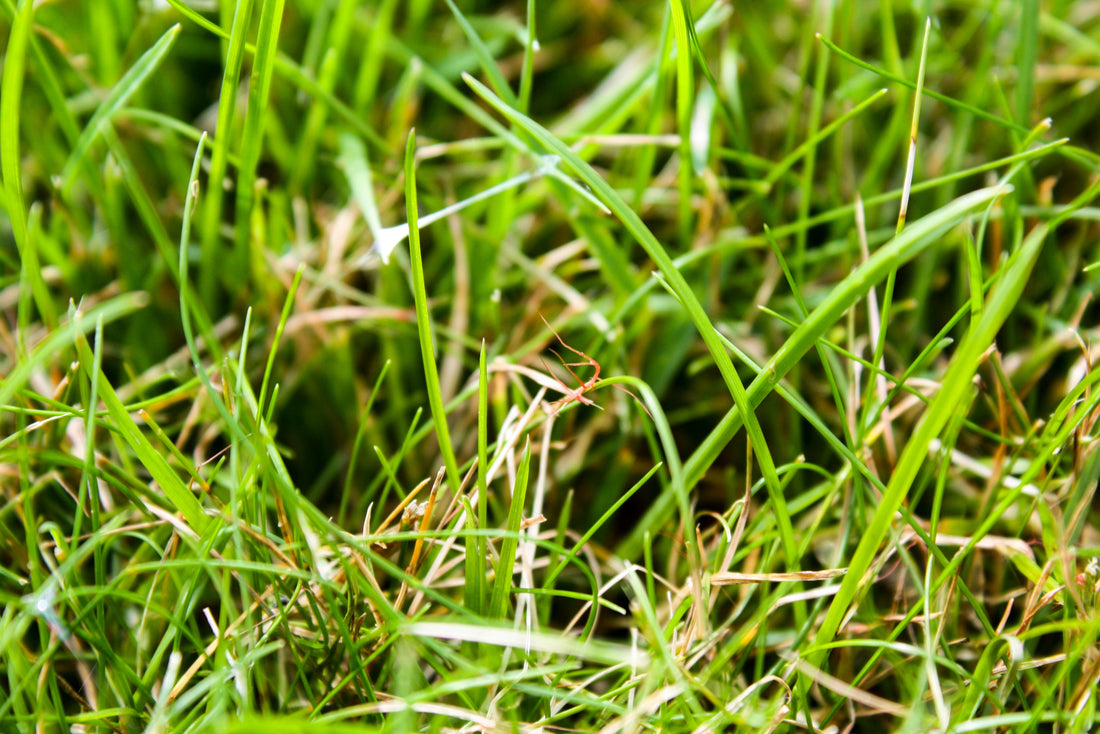My lawn and Red Thread
As the temperature rises during the summer, so does the likelihood of encountering various lawn issues. One problem that plagues lawns in hot weather is the notorious Red Thread. GreenThumb Lawn Operatives are currently noticing an increase in Red Thread across lawns in the U.K.
We’re here to help you identify Red Thread and how to combat it.
What is Red Thread in grass and how to identify it.
Red Thread is a fungal disease that effects the grass when the lawn is undergoing stress, such as drought, high humidity, or poor cutting. It gets its name from the reddish-pink threads or strands that appear on the grass blades.
Red Thread appears as patches of damaged grass which often have a pink or red appearance. If it’s not addressed the lawn will look poor through the best part of the growing season.
- Reddish/brown patches of decaying grass.
- Fine red needles protruding from the blades of grass.
- Pink/reddish candy-floss like particles around the base of the leaf.
- Infected blades mixed with healthy blades giving the lawn a ragged appearance.
In severe cases, the grass may look scorched or yellow in irregularly shaped or circular patches from 5 to 50cm in diameter. The patches may be widely scattered or, if close together, may amalgamate into larger spots.
What causes Red Thread in lawns?
Although high humidity is the main cause, several other factors can contribute to the development and spread of Red Thread in grass.
- Moisture: Excessively wet or humid conditions create an ideal environment for the fungus to thrive.
- Low nutrition: Grass lacking in nutrition is more susceptible to red thread infection.
- Low Mowing Height: Cutting the grass too short weakens it and makes it more vulnerable to diseases.
- Poor Air Circulation: Lack of airflow and poor drainage can create a conducive environment for the growth of red thread.
How can I prevent Red Thread?
Generally, if you have good lawn maintenance and regular fertiliser treatments this reduces the incidence of it. The healthier the lawn the less likely there is to be damage.
- Regular lawn treatments: This helps maintain strong and healthy lawn that is more resistant to disease.
- Watering: Keep the lawn hydrated through periods of dry weather. However, avoid overwatering. Water deeply but infrequently to promote deep root growth and prevent prolonged moisture on the grass blades.
- Mowing: Mow regularly and at the correct height, between 25mm (1’’) – 50mm (2’’). Raise the cut to 50mm in dry weather - correct mowing will strengthen the grass. Also, make sure your mower blades are sharp.
How to treat Red Thread
If Red Thread does occur, GreenThumb can reduce the activity of it with a liquid tonic treatment. To find out more about our Red Thread Disease Treatment click here. It’s best applied at the early stages of the outbreak and close to your next scheduled NutraGreen treatment date.
Speak to your local GreenThumb branch here.
What can I expect after my Red Thread Grass Disease Treatment?
The lawn should overcome the Red Thread grass disease within 7-10 days of application. It has been our experience that if the humid weather continues, in rare circumstances Red Thread may reoccur.
We also recommend keeping children and pets off the lawn for at least two hours or until the treatment has dried onto the leaf. Although there is no extreme hazard, it’s just good to be cautious.
Red Thread can be a nuisance and negatively impact the health and appearance of your lawn. By understanding red thread, its causes, and prevention methods, you can take proactive steps to keep your lawn healthy and minimize the risk of Red Thread.
Did you know?
There are many other fungal diseases and disorders that are found on lawns throughout the U.K. Examples of these are Leaf spot, Fusarium, Snow Mould along with some disorders like Fairy Ring, Rust, Dollar Spot.

